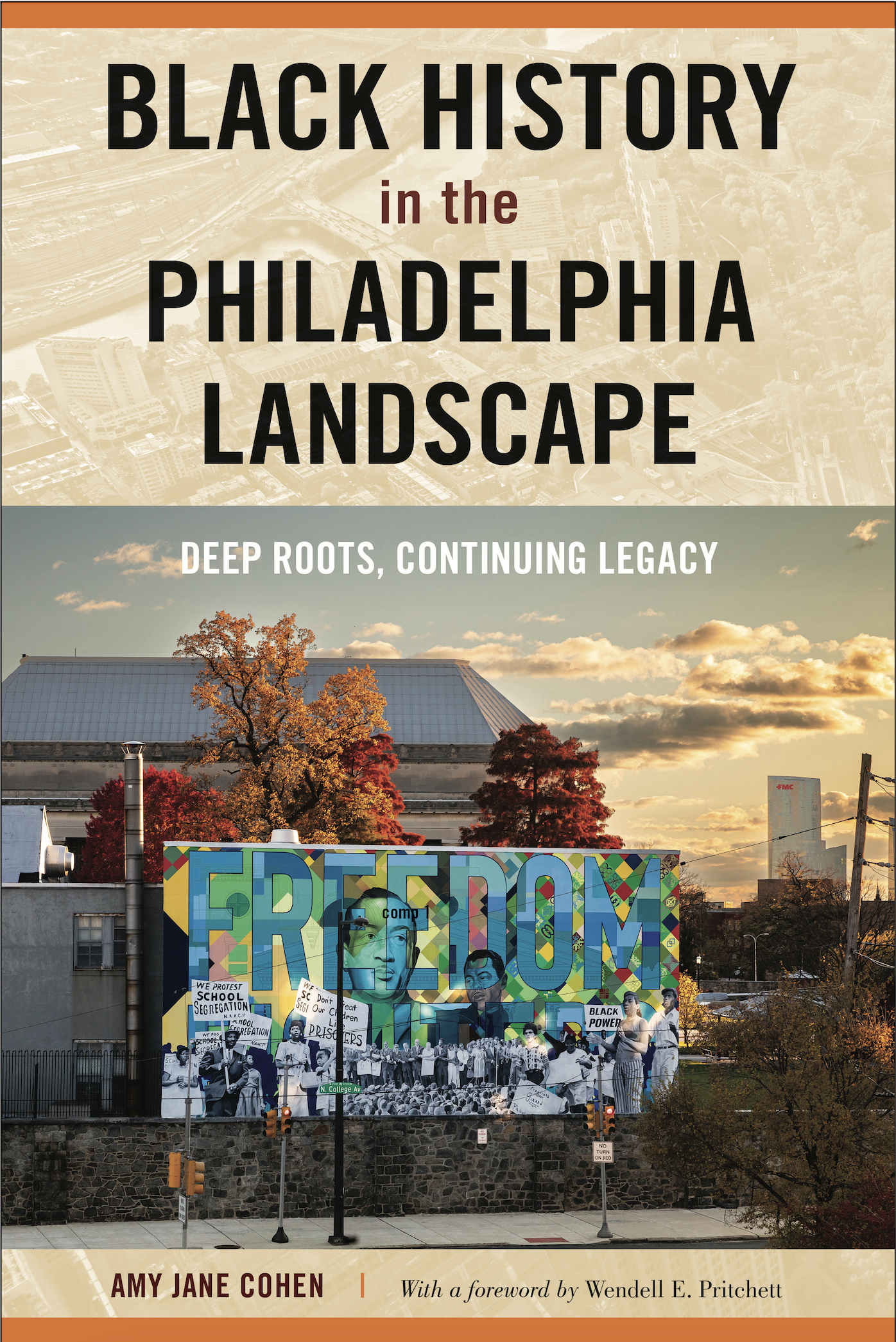
By Constance Garcia-Barrio
Black history monuments have become a sizzling topic at Stenton Museum, which is located at 4601 N. 18th Street, near Wayne Junction.
Writer, educator, and historian Amy Jane Cohen gave an illustrated talk at Stenton recently based on her book, “Black History in the Philadelphia Landscape, Deep Roots Continuing Legacy,” published by Temple University Press this past February.
The book shows how evidence of a Black presence in Philadelphia over centuries marks the city, spanning from the late 1600s, when enslaved Black children served drinks at Old City taverns, to the explosive 1960s.
Instead of providing a simple overview of more than 300 years, the book’s 19 chapters delve into the lives of influential Black Philadelphians like Richard Allen (1760-1831). A statue, mural, street, and station on the Chestnut Hill West Regional Rail Line bear the name of this minister, educator, writer, and founder of the African Methodist Episcopal Church, Cohen said.*
A native Philadelphian, Cohen began by discussing how “a nice Jewish girl” came to write a book about Philadelphia’s Black history.
“I was teaching history at Masterman High School in 2005 when the Philadelphia School District became the first in the country to require one year of African American history for graduation,” said Cohen, director of education at History Making Productions, a film and video production studio that has received more than two dozen Emmy Awards. “In many cases, I expanded on what I had already been teaching.”
For example, one chapter in Cohen’s book centers on Octavius Catto (1839-1871), a Black educator, intellectual, political activist, and athlete gunned down on Election Day in 1871. Years before writing her current book, Cohen had written a teacher’s guide for “Tasting Freedom: Octavius Catto and the Battle for Black Equality in Civil War America,” a 2010 Catto biography by Daniel Biddle and Murray Dubin.
Cohen’s current book includes a chapter on the planning of the memorial to Catto. Unveiled in 2017 on the south apron of City Hall, it’s the first figural monument to a specific Black American on public property in Philadelphia.
“Black History in the Philadelphia Landscape” looks at such tributes as street names, markers, murals, and buildings. Cohen, who also writes for Hidden City which focuses on Philadelphia’s architecture, mentioned the President’s House, 6th and Market Streets, which commemorates the lives of nine enslaved Africans George Washington brought to Philadelphia — the nation’s capital from 1790 to 1800 — when he served as president from 1789 to 1797.
Cohen also mentioned the Johnson House Historic site, at 6306 Germantown Avenue, a National Historic Landmark. Built in 1768, it served as a station on the Underground Railroad.
Murals throughout the city stand as gigantic reminders of the achievements of Philadelphia-bred Black Americans.
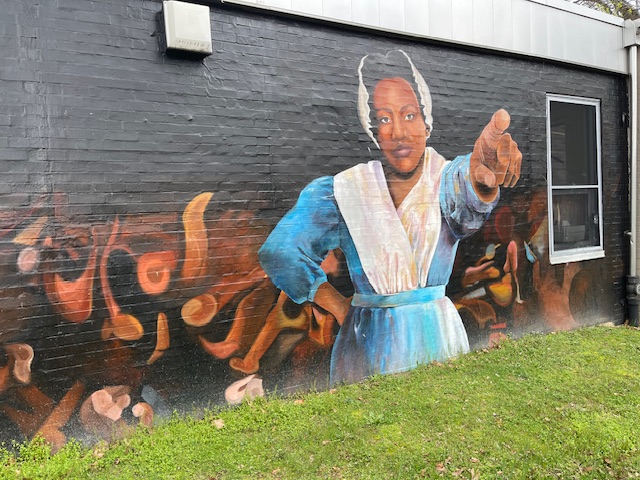
Dinah mural at Stenton. Photo by Ron Riggle
Cohen attributes many of the city’s commemorative Black history markers to the work of the late African American historian Charles L. Blockson, founder of Temple University’s Blockson Collection, which houses a myriad of items related to the global Black experience. For example, a plaque at 2 S. Front Street marks the location of the London Coffee House, where Pennsylvanians bought and sold enslaved Black people.
The need for historical monuments and statues
While the city has state markers and mural images of Black Philadelphians, one commemorative element remains in scant supply.
“There’s a dearth of real bronze-on-granite monuments,” Cohen said.
The planned statues of Harriet Tubman and Marian Anderson will fill an urgent need.
“Our history isn’t only the Liberty Bell and Benjamin Franklin,” Cohen said. “If white Philadelphians had a sense of how long and deep the city’s African American history is, it could give them a greater appreciation of their contributions.”
Celebrating Dinah’s legacy
Cohen’s presentation dovetailed with Stenton’s April 20 unveiling of a memorial to Dinah, a freedwoman and housekeeper who saved Stenton from destruction, tradition says.
“It’s the first monument to a formerly enslaved woman in the city of Philadelphia,” said Dennis Pickeral, executive director of Stenton, a historic site and former plantation, built from 1723 to 1730 by James Logan (1674-1751), a merchant, scholar, politician, and William Penn’s secretary.
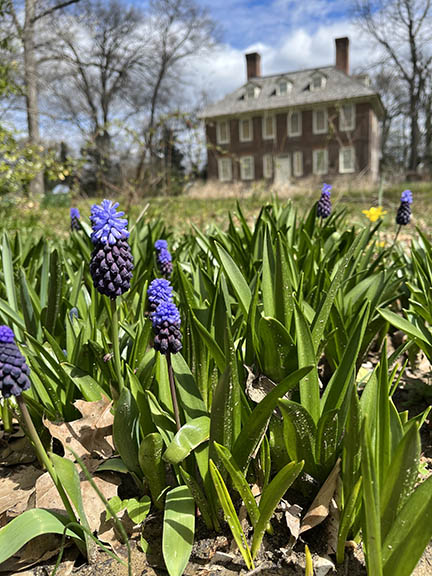
Stenton Museum in Germantown surrounded by beautiful muscari flowers.
Photo: Laura C. Keim
Dinah (c. 1725-1805), whose surname remains unknown, joined the household as an enslaved woman, part of the dowry of Hannah Emlen, who married William Logan, James Logan’s son. Dinah helped to care for Stenton’s furnishings, eye-popping in their costliness in the 1700s. Hannah and James Logan freed her in 1776 at her request. She then began working for the Logans for wages. Dinah remained at Stenton, maybe because her grandson Cyrus, who was enslaved until he was 21, lived there.
According to a Logan family story, after the British beat George Washington’s troops at the Battle of Germantown on October 4, 1777, a pair of British soldiers knocked on Stenton’s door and told Dinah, alone at the time, that they meant to burn down the mansion. When they asked Dinah for fuel, she sent them to the barn for straw.
Meanwhile, some British officers rode up.
“Have you seen any deserters?” they asked Dinah.
“There’s two of them in the barn,” she said.
And with that, the officers carted off the “deserters,” thus saving Stenton.
A 1912 plaque honors Dinah as “the faithful colored caretaker,” but that description, rooted in language used at the time, falls short, Pickeral said.
“We wanted to tell the totality of her story, and honor her heroism, legacy, and whole personhood,” he said. “The monument, conceived by artist Karyn Olivier with extensive community input, features two tablets with imagined polished stone silhouettes representing Dinah and engraved questions for viewers to reflect upon.
For example, the tablets ask “How did freedom feel? What was your greatest joy and your greatest sorrow?’”
Other details at Stenton echo Dinah’s presence.
“We planted grape hyacinth here because the seed heads were used as a bluing agent to help whiten clothes,” said Carol Rush, chair of Stenton’s garden and landscape committee. “Dinah’s duties probably included washing clothes.”
Continuing research could lead to a fuller picture of the lives of other African Americans at Stenton — stay tuned.
For more information about Cohen’s book, visit: https://tupress.temple.edu/books/black-history-in-the-philadelphia-landscape. For more information on programs and events at the Stenton Museum, visit: www.stenton.org/.
*EDITOR’S NOTE: Allen’s Lane was originally named after William Allen, a former 18th century Philadelphia mayor, investor, slave holder and Loyalist objector to the Declaration of Independence. The street was renamed Richard Allen Lane in 2022 in honor of the famous African Methodist Episcopal Church’s founder.





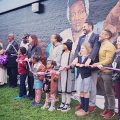

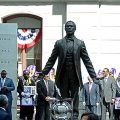









Leave a Comment